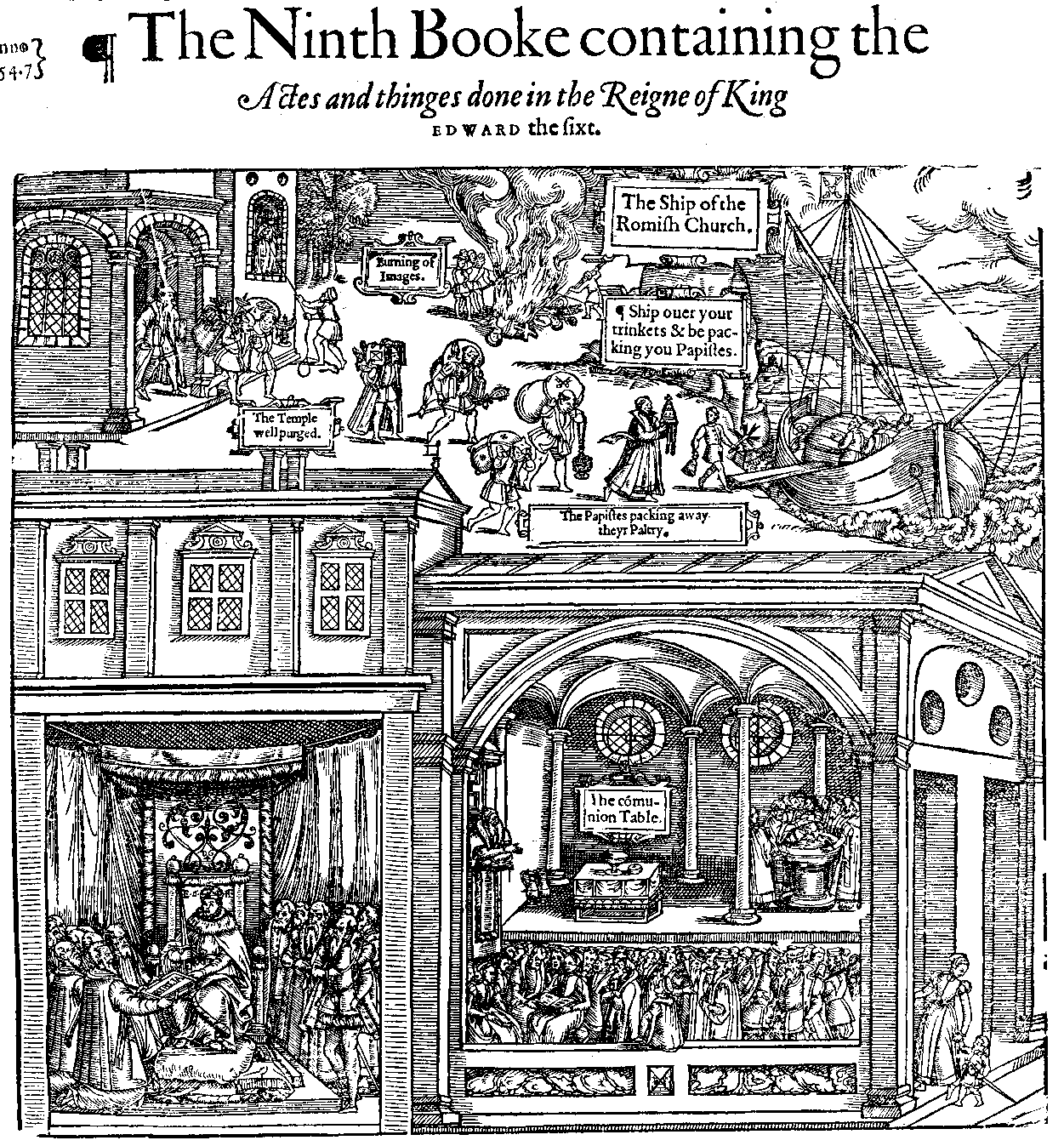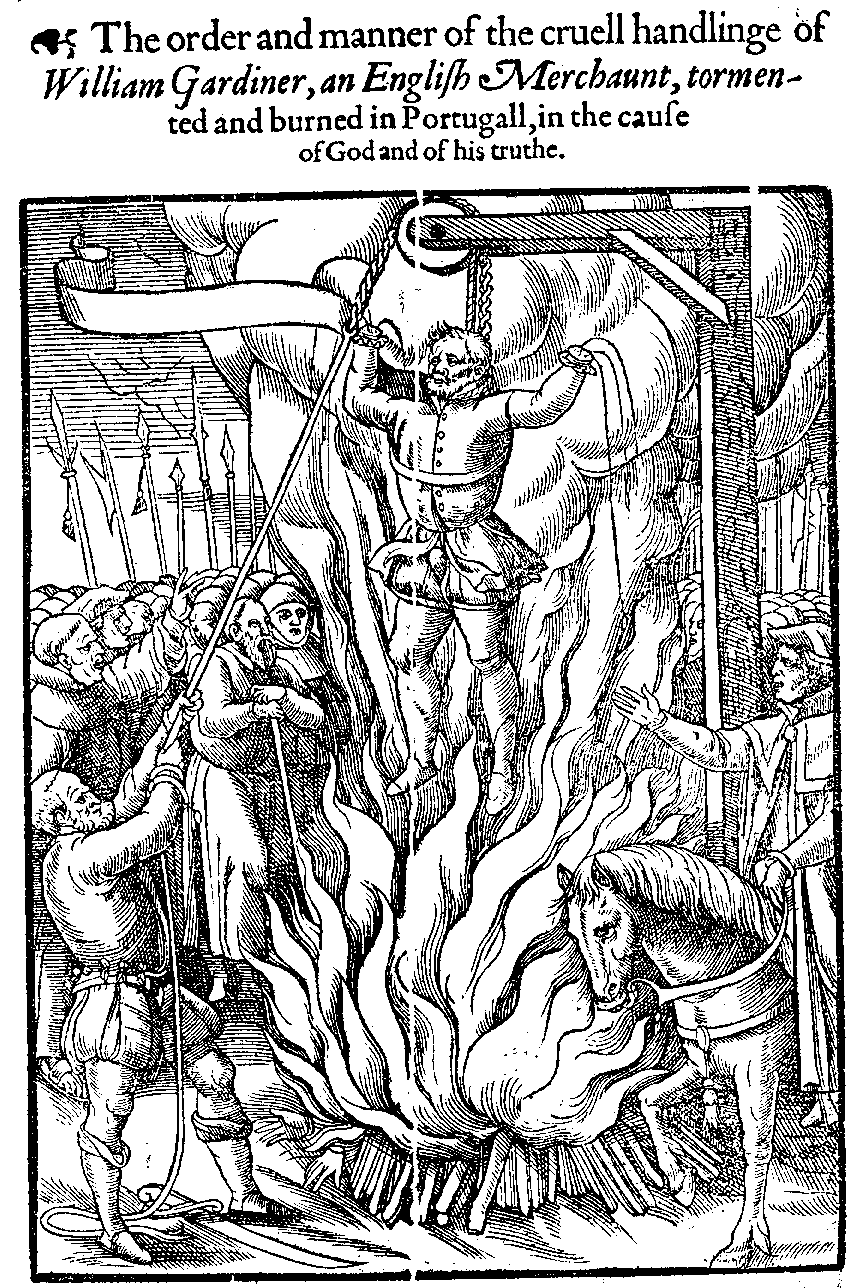Commentary on the Woodcuts for Book 9
The Ninth Booke containing the Actes and thinges done in the Reigne of King Edward the first.
Like the imposing image at the beginning of the reign of Henry VIII, the woodcut prefacing the reign of Edward VI at the start of Book IX presents pictorial witness to the reforming achievements of the young Josiah. This is a programmatic enactment of the most important 'actes and thinges done' in Edward's reign. It celebrates, in a neat tripartite formula, the most important reforms achieved by a prince 'tender in yeares' but mature in godliness. At the top of the page in a deft compression (helped by its inserted tags) we see how churches were cleared of 'popish trumpery' by burning images, while crosses, chalices, candlesticks, mass books and other discarded ceremonial objects are being transported to banishment in the the 'ship of the Romish Church' by Catholics fleeing into exile. In the lower portion of the woodcut the young king, seated in state before his lords spiritual and temporal, hands the holy book of the word to the divines on his right, as his father had before him. On the other side, in a masterpiece of compression, a reformed church is depicted, furnished for only the two sacraments of baptism and communion. The communion table (labelled as such) is free-standing and not placed against the wall. Meanwhile the preacher (with book) in his pulpit, and the crammed congregation listening below, tell us that the service of the word is the be all and end all. The seated woman with the book is present here, just as in the scene of Latimer preaching, and the role of women in this new world is also indicated by the mother and child mounting the step nearly offstage to the right.
1570 Edition, page 1521 | 1576 Edition, page 1281 | 1583 Edition, page 1318[Back to Top]The order and manner of the cruell handlinge of William Gardiner, an English Merchaunt, tormented and burned in Portugall, in the cause of God and of his truthe.
It may have been an accepted patristic commonplace that the cause, not the punishment, makes the martyr, but it proved difficult (if not impossible) not to see a relationship between the two. Foxe's image of William Gardiner is among his most shocking. But the shock could not be seen as other than appropriate for the significance of the condemned's stand. His offence, that of trampling on the consecrated host and overturning the communion chalice, in no less a place than the Portuguese royal chapel, was to be seen as a heroic gesture in the noblest of causes: refusing to accept papal maintenance of the most egregious of all spiritual trespasses --- the idolatry of the host. The horror of this execution, the condemned man's hands having been cut off before the burning, and his body then suspended on a pulley enabling him to be raised and lowered in and out of the fire, prompted readers to make their own contribution by inserting words into the empty bandarole, such as 'Pitty, pitty', and 'I suffer for the Truth'. The substantial accuracy of Foxe's account of this event can be verified in Portuguese records, and it is clear that his informant was in Lisbon at the time and quite probably an eye-witness of the event. CUL copy: note that additional detail is provided; for example, the blood gushing from his wrists. He is wearing a purple-pink top and blue hose. WREN copy: the same details are provided in this copy also.
1563 Edition, page 935 | 1570 Edition, page 1582 | 1576 Edition, page 1340 | 1583 Edition, page 1390[Back to Top]

